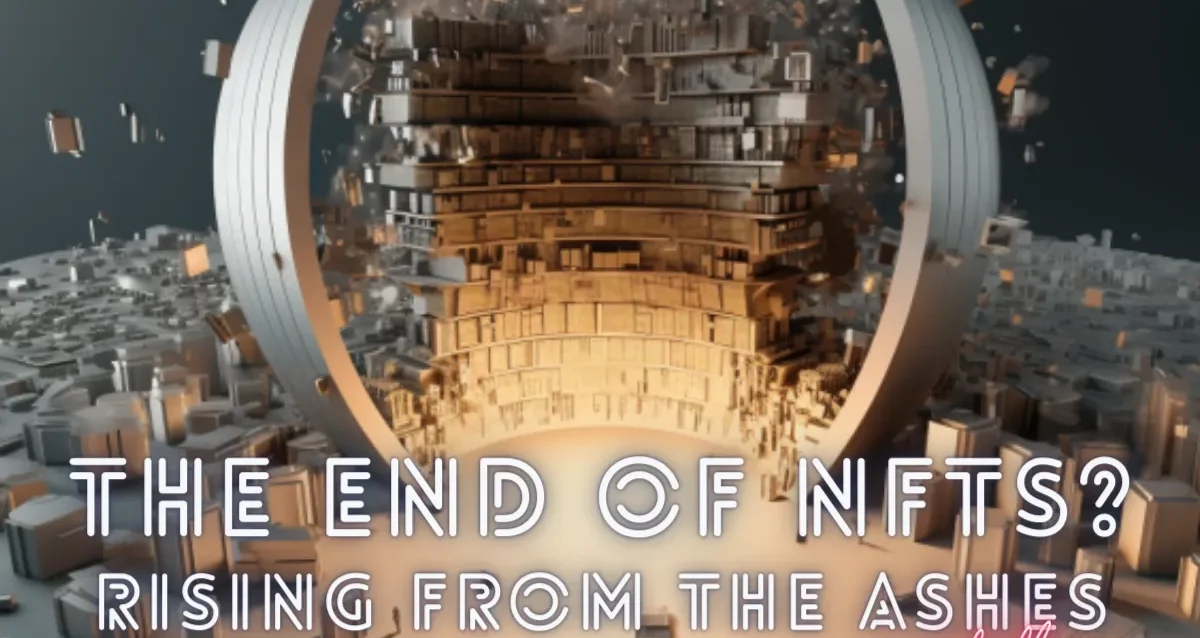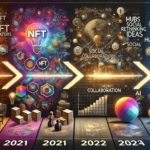Within the digital realm, the NFT (Non-Fungible Token) market witnessed a captivating rise and subsequent collapse in 2021, echoing the dramatic narrative of the Dotcom bubble. Through the convergence of political, macroeconomic, and market-specific factors, we delve into the enigmatic forces that shaped the NFT market’s destiny. By unraveling the influences of technology shifts, available funds, and public encouragement, we gain insights into the collapse and its profound implications for our digital future.
Embarking on a mesmerizing journey through the digital landscape, the NFT (Non-Fungible Token) market experienced a riveting rise and a tumultuous collapse in 2021, reminiscent of the dramatic echoes from the Dotcom bubble. To unravel the enigmatic causes behind this downfall, we must navigate the intertwined web of political and macroeconomic factors that swayed its course. By drawing parallels to the Dotcom era of the late 1990s, we unveil the dynamics that shaped the fate of the NFT market.
The dotcom bubble and its burst
In the annals of economic history, the Dotcom bubble stands as a captivating reference point, symbolizing both the meteoric rise and devastating fall of technology-driven enterprises. As the Nasdaq stock market index soared to unprecedented heights, the bubble eventually burst, leaving a trail of shattered dreams in its wake. A trifecta of factors fueled this rollercoaster ride: a transformative technology shift, the availability of abundant funds, and the resounding chorus of public encouragement.
Technology shift
The allure of the digital revolution gripped investors’ imaginations, igniting their passion for web 2.0’s transformative potential. This excitement translated into a surge of investments pouring into internet-related companies, even if their balance sheets lacked substantial earnings and operated at a loss.
Availability of funds
The landscape was ripe with opportunity as low interest rates beckoned venture capitalists to unleash a torrent of funds. Moreover, the reduction in the top marginal capital gains tax in the United States provided an enticing incentive for individuals to invest in shares, including those of internet-based enterprises. The resulting flood of liquidity unleashed a feverish frenzy of buying and selling, propelling stock prices to dizzying heights.
Public encouragement
The siren call of investment banks echoed loudly, urging investors to seize the golden opportunities presented by technology companies. Fueling the fire, these institutions reaped substantial profits from the initial public offerings (IPOs) of these tech ventures, further amplifying the fervor for investment.
Yet, the intoxicating blend of soaring valuations and an absence of earnings ultimately led to a reckoning. As reality set in, the market witnessed a swift decline, compounded by the sell-off of shares by employees of technology companies after their lock-up periods expired.
Similarities with the NFT market collapse of 2021–2022
The collapse of the NFT market in 2021 bore an uncanny resemblance to the tumultuous Dotcom bubble. Two key factors emerged as striking parallels:
Technology shift
Just as the transition from Web 1.0 to Web 2.0 fueled the Dotcom bubble, the ongoing shift from Web 2.0 to Web 3.0 left an indelible mark on the NFT market. While Web 2.0 facilitated user-generated content and interactive communication, Web 3.0 emerged with a focus on decentralization, interoperability, and machine-to-machine communication. However, akin to the Dotcom era, Web 3.0 companies operated in an uncharted territory, with profitability paths remaining elusive.
Availability of funds:
In the fevered frenzy of the NFT market’s heyday, funds flowed freely, buoyed by historically low interest rates and a surge in venture capital investments. Yet, the tide turned in 2022, as geopolitical events such as Russia’s invasion of Ukraine and subsequent energy price hikes and sanctions altered the landscape. Venture capital funds dwindled, private consumption declined, and the willingness to invest in NFTs waned.
The role of macroeconomic factors
While macroeconomic factors undoubtedly played a significant role in the NFT market’s decline, a closer examination reveals that the downward trajectory had commenced before their impact. This suggests that market-specific dynamics within the NFT ecosystem also contributed to the collapse.
Conclusion:
The collapse of the NFT market in 2021 resulted from a convergence of political, macroeconomic, and market-specific factors. By drawing parallels to the Dotcom bubble, we gain valuable insights into the intricate workings of emerging markets. While macroeconomic factors like technology shifts and the availability of funds were key contributors, market-specific elements also played a pivotal role. Through careful analysis, we can gain a deeper understanding of the collapse and potentially forecast future market trends.
Remarks
This article provides an overview of potential factors contributing to the NFT collapse of 2021–2022. Further research and analysis are necessary to develop a comprehensive understanding of the subject matter.

Katharina Brosch is the manager of public relations from the start-up ACYC. She contributes to the public especially to NFT investors and NFT artists to assess NFTs and to get profit out of it. Before Katharina Brosch came to the crypto space, she was in the insurance and finance industry for over one year as self-employed in Karlsruhe and Stuttgart. Her long university experience in research analysis helps Katharina now to write articles and perform in public. Katharina loves to travel around the world and in her free time she draws Pop Art NFTs. For any questions about assessments and ratings about NFTs Katharina and the team of ACYC is available under the following email. [kb at ACYC]










